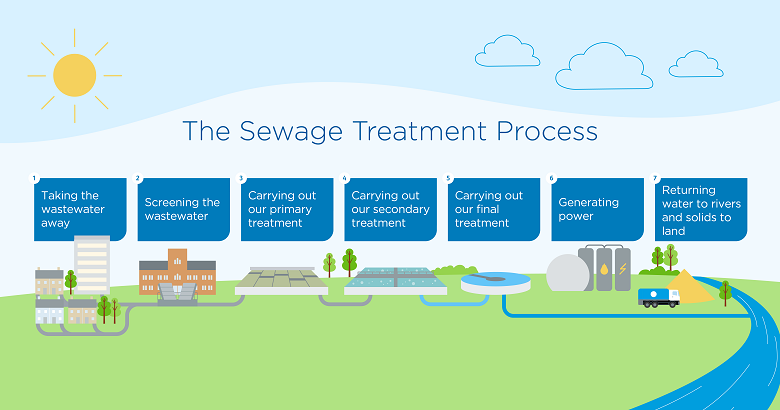Secret Challenges in Urban Waste Water Treatment Techniques
Secret Challenges in Urban Waste Water Treatment Techniques
Blog Article
Strategic Approaches to Improve Waste Water Therapy Efficiency and Decrease Environmental Influence
In the realm of waste water treatment, the pursuit for boosted performance and lowered ecological influence is a perpetual difficulty that demands calculated services. The combination of advanced treatment modern technologies, energy-efficient processes, resource recovery methods, improved nutrient elimination strategies, and wise monitoring and control systems stands for a diverse structure for addressing these pushing problems.
Advanced Therapy Technologies
Advanced membrane purification systems have actually revolutionized advanced wastewater treatment processes, substantially improving the removal of contaminants. These innovative systems operate forcibly water through a semi-permeable membrane layer, properly dividing impurities from the water stream. The membrane layer's tiny pores trap contaminants such as microorganisms, viruses, and suspended solids, enabling just detoxified water to go through. This modern technology has shown to be very reliable in removing a vast array of contaminants, consisting of drugs, heavy steels, and natural compounds, which are commonly testing to eliminate through standard therapy approaches.
Moreover, membrane filtration systems offer numerous benefits over conventional treatment strategies. Furthermore, these systems are highly functional and can be easily incorporated right into existing treatment plants or used as standalone systems for decentralized applications.
Energy-Efficient Processes
The integration of energy-efficient procedures in wastewater treatment systems is crucial for maximizing resource use and minimizing functional expenses. By implementing energy-efficient innovations, treatment plants can substantially decrease their carbon impact and general ecological impact. One vital method to boosting energy effectiveness in wastewater therapy is the use of advanced oygenation systems, such as fine bubble diffusers or surface aerators, which can boost oxygen transfer effectiveness and reduce energy intake. Additionally, including energy recuperation systems, like anaerobic digestion for biogas manufacturing or making use of excess heat for thermal procedures, can help balance out power demands and advertise sustainability.
Additionally, enhancing procedure control and automation with the usage of sophisticated sensing units and keeping track of systems can improve general power performance by readjusting procedures in real-time based upon real need and conditions. Executing energy audits and consistently monitoring energy efficiency indications are essential techniques to identify areas for improvement and track energy-saving initiatives efficiently. Generally, the adoption of energy-efficient processes in wastewater treatment not only benefits the atmosphere yet also adds to lasting cost savings and functional sustainability.
Source Healing Approaches
With a concentrate on maximizing resource application and sustainability in wastewater treatment systems, the application of source recuperation methods becomes an essential aspect in improving functional performance. Resource recovery strategies in wastewater treatment involve the identification and removal of beneficial sources from the waste stream, therefore transforming what was when taken into consideration waste right into an important asset. By executing resource recovery methods such as nutrient removal and recuperation, energy generation from raw material, and pop over to this web-site the production of reusable water, wastewater therapy plants can reduce environmental effect while taking full advantage of effectiveness.

Boosted Nutrient Elimination Strategies
Executing sophisticated nutrient elimination strategies is important for enhancing the efficiency of wastewater treatment systems. One of the essential techniques utilized for improved nutrient removal is the process of organic nutrient elimination (BNR), which entails the removal of nitrogen and phosphorus through organic processes.

In addition to BNR, progressed therapy methods such as membrane bioreactors (MBRs) and built marshes can additionally be used to enhance nutrient elimination performance. By incorporating these advanced nutrient removal techniques into wastewater therapy communities, systems and markets can effectively decrease nutrient contamination and safeguard the environment.
Smart Monitoring and Control Systems
Making use of cutting-edge technology, the integration of clever surveillance and control systems changes the functional efficiency of wastewater treatment facilities. These systems include sophisticated sensors and data analytics to constantly keep track of key parameters such as pH degrees, turbidity, liquified read oxygen, and circulation rates in real-time. By collecting and analyzing this information, drivers can acquire valuable understandings into the efficiency of the therapy processes, making it possible for positive adjustments to optimize therapy effectiveness.
Smart monitoring and control systems additionally sustain remote tracking capacities, enabling drivers to access real-time information and control functions from off-site areas. This remote ease of access boosts operational versatility and responsiveness, enabling quick treatments in situation of system breakdowns or fluctuations in influent high quality. Furthermore, the predictive upkeep capabilities of these systems assist prevent devices failures and lessen downtime, ultimately boosting the overall dependability of wastewater therapy procedures (Waste Water Treatment).
Final Thought
Finally, strategic methods such as sophisticated therapy technologies, energy-efficient processes, resource healing methods, boosted nutrient elimination techniques, and smart tracking and control systems play an important duty in enhancing wastewater treatment effectiveness and minimizing environmental effect. By implementing these strategies, wastewater treatment plants can enhance their total performance, lower energy consumption, recoup beneficial resources, and guarantee compliance with environmental policies. These techniques are crucial for reliable and lasting wastewater monitoring techniques.
In final thought, strategic strategies such as sophisticated therapy innovations, energy-efficient procedures, resource recuperation techniques, boosted nutrient removal methods, and smart surveillance and control systems play a vital function in boosting wastewater treatment performance and lessening environmental influence.
Report this page